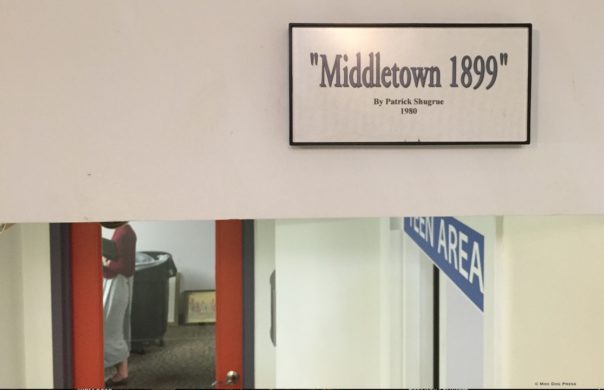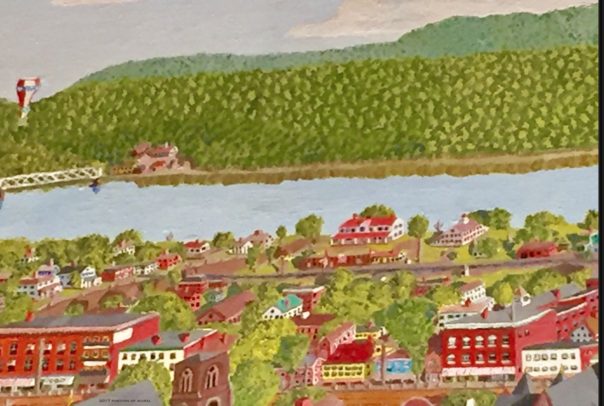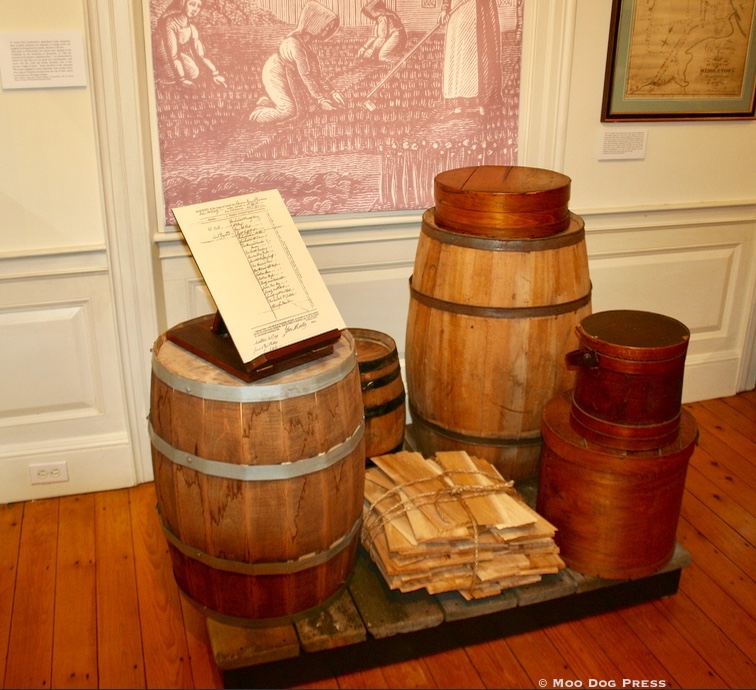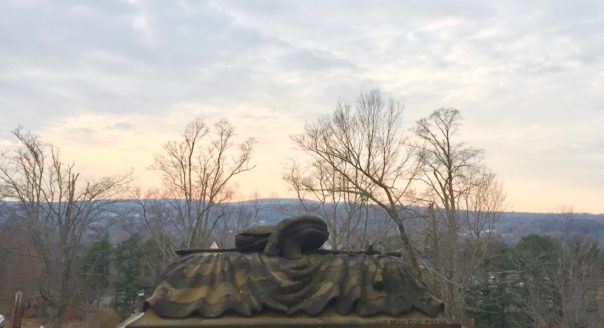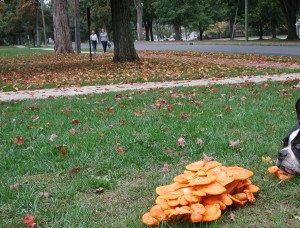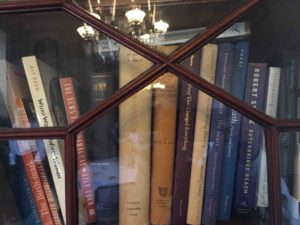Middletown Is A Riverport, More Then and Now
“Look around, look around at how lucky we are
To be alive right now
Look around, look around…”
– “That Would Be Enough” from Hamilton by Lin Manuel-Miranda*
All things must change; places and seasons are no exception. A river is a water road. A port is hub that connects world trade to a place.
As summer shifts slightly, here are a few noteworthy events. Explore a riverport's connections to the world. Learn more about how to cultivate a landscape friendly to pollinators – and why that matters. Forage behind an experienced food finder – learn more about mushrooms and other wild edibles.
Sign up soon (space is limited) for Exploring Connecticut’s Towns – Middletown! – a tour led by Deborah Shapiro, executive director, Middlesex County Historical Society, on Saturday, Aug. 25, 10 a.m., Middletown. Advance registration required; $15 per person. This is for adults and children ages 8 and older. Children must be accompanied by an adult.
“The natural and cultural history of Connecticut, in each of its 169 towns, has a unique story to tell. From the indigenous peoples arriving after the glaciers receded and the European explorers and settlers establishing colonies in the “New World,” to the innovators of the industrial revolution leading to the present day, Connecticut is steeped in history. Join us as we explore Connecticut’s towns and learn about the people and places that have shaped and continue to shape the Constitution State. Located along the Connecticut River, Middletown was initially incorporated under its Native American name Mattabeseck in 1650, before receiving its present name in 1653.
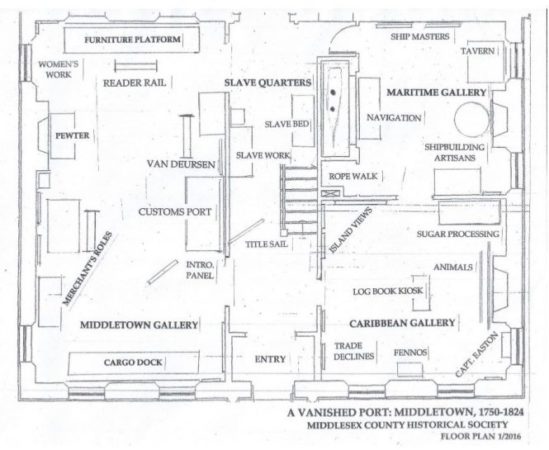
A floor plan of the award-winning exhibit ‘A Vanished Port' at MCHS headquarters – the Mansfield House on Main Street, Middletown, CT. Image is linked to the MCHS site for more information.
Originally a busy sailing port and then industrial center, today Middletown is residential city with a thriving downtown area filled with unique restaurants and shops.”
Participants will first tour the exhibit “A Vanished Port: Middletown & the Caribbean, 1750-1824” at the Middlesex County Historical Society. It is a portrait of early Middletown, which was an important port during the heyday of the West Indies trade. The exhibit depicts the luxurious life of merchants and sea captains as evidenced by the Society’s furniture and decorative arts collections, but also shows that Middletown’s prosperity rested on the suffering of enslaved workers in the sugar monoculture of the English Caribbean.
Following the exhibit, the group will walk along Main Street to the South Green and other points of interest where guide Deborah Shapiro, the executive director of the Historical Society, will talk about other aspects of Middletown’s history including its participation in the Civil War and emergence as a manufacturing center in the industrial revolution. Middletown was also active in the Abolitionist Movement and the home of Benjamin Douglas, a conductor on the Underground Railroad, will be pointed out.
This is one event in an ongoing series by Connecticut State Museum of Natural History & Connecticut Archaeology Center; more information linked here.
+++++++++++++++++++++++
Another walk opportunity (with a different topic) will be led Joe Lenoce of Connecticut Valley Mycological Society on Saturday, Aug. 25, 10 a.m. at Cedar Hill Cemetery, 453 Fairfield Ave., Hartford. Lenoce will discuss basic types of fungi, where to find them and proper methods of collecting. After the walk, he will review documentation resources while identifying any items collected. Fee $5 per person. Cedar Hill Cemetery Foundation offers themed walks, theatrical performances, musical events, movies, and other family-friendly programs.
Footnote to a walk in Middletown: * Sydney Kim of Weston, Mass., has been selected as the recipient of the 2018 Wesleyan University Hamilton Prize for Creativity, a four-year full-tuition scholarship to Wesleyan University, worth as much as $200,000. Her submission, a short story titled “The Driveway,” was selected by an all-star committee of Wesleyan alumni chaired by Hamilton writer and original star Lin-Manuel Miranda ’02, Hon. '15 and director Thomas Kail ’99, from more than 550 entries. The Wesleyan University Hamilton Prize for Creativity was established in honor of Miranda and Kail. It is awarded to the incoming first-year student whose work of fiction, poetry, creative nonfiction, or other creative written expression (lyrics, plays, scripts, etc.) best reflects the originality, artistry, and dynamism embodied in Hamilton.Lin-Manuel Miranda ’02, Hon. ’15 is a Pulitzer Prize, Grammy, Emmy and Tony award-winning composer, lyricist and actor. He is (of course) the creator and original star of Broadway’s Tony-winning Hamilton and In the Heights.

